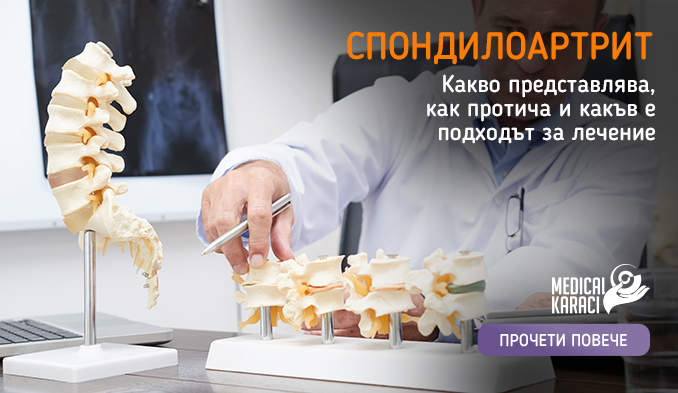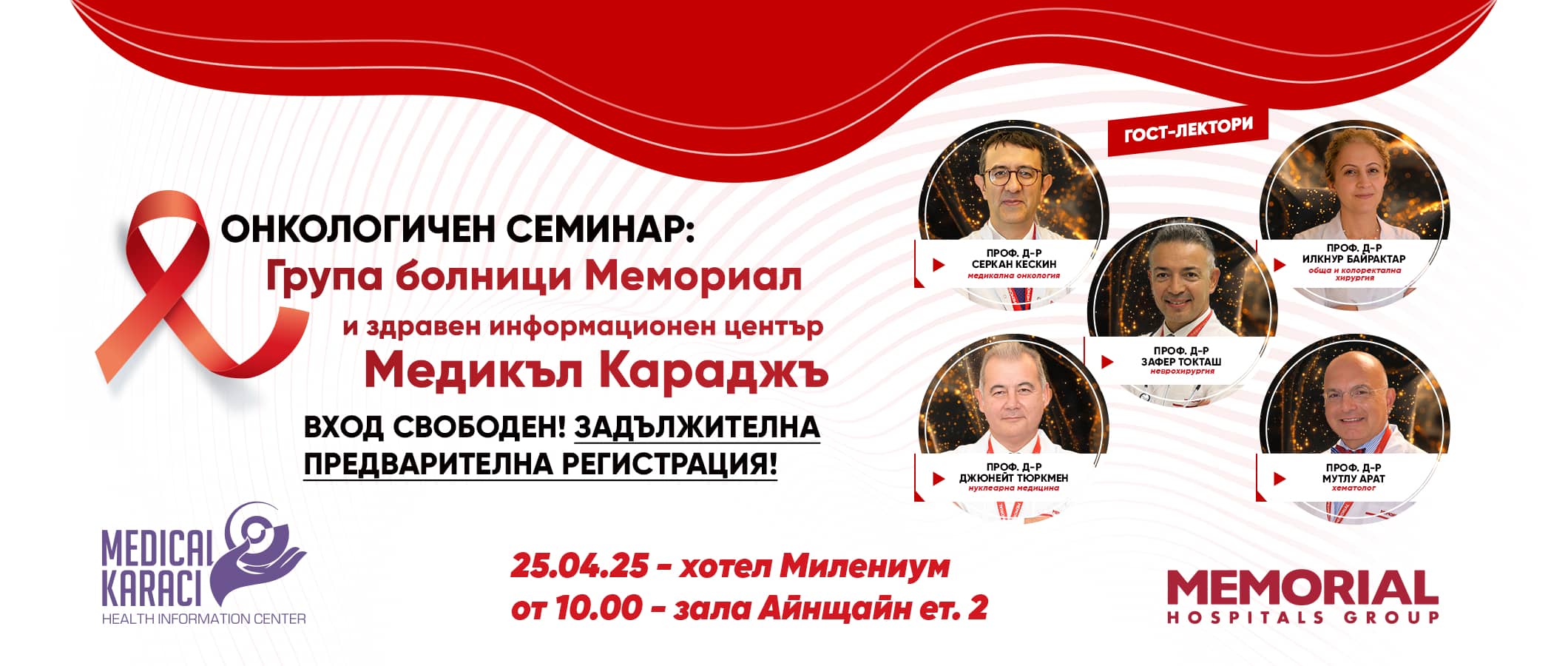What is spondyloarthritis?
Spondyloarthritis, also called spondylitis, is a rheumatologic disease that manifests with inflammation of the intervertebral joints of the spine. What makes spondyloarthritis different from other types of arthritic inflammation is that it affects the places where bones and ligaments connect.
What are the causes of spondyloarthritis?
The disease most commonly spans the teenage and 20-something years, with males predominantly affected.
People in their teens and 20s, especially men are affected most often.
Inflammation can be a consequence of infection or autoimmune disorder, and most often the disease develops against the background of genetic predisposition.
How does it work?
In response to joint inflammation, tension arises in the surrounding muscles, which try to compensate for the instability of the spine. This provokes the involvement of the intervertebral discs, which occupy an incorrect position.
The distance between the vertebral bodies decreases, and the intervertebral discs compress and move out of their anatomically intended position. Therefore, all these compensatory mechanisms provoke irritation of the spinal nerve roots, which aggravates the pain symptomatology.
Spondyloarthritis can develop rapidly, with pronounced symptomatology, but it can also progress slowly - almost asymptomatic, until it turns into a chronic form of the disease.
Basically, spondyloarthritis is classified as axial and peripheral.
- The axial form mostly affects the pelvic joints and spine, causing fatigue and pain in the hips, ankles and knees.
- The peripheral form primarily affects the extremities and secondarily causes discomfort in the lumbar region or pelvis.
What are the common and most common symptoms of spondyloarthritis?
- Back pain
- Digestive problems
- Fatigue
- Inflammation of the aortic heart valve
- Osteoporosis
- Pain or swelling in other joints, including hips, knees, ankles, feet, hands, wrists, elbows and shoulders
- Psoriasis or skin rash
- Swelling along the tendons of the fingers or toes
- Swelling, pain or redness of the eyes
What are the types of spondyloarthritis (arthritis)?
- Reactive arthritis - aka Reiter's Syndrome. There is an increase of uric acid in the body, also causing inflammation in the urinary tract, joints and eyes, and finally inflammation of the joints of the spine. As we have said, complaints first develop away from the spine, with symptomatology lasting about 3-12 months, after which it resolves. After a while, the same symptomatology develops again and if diagnosis and treatment is delayed, the condition becomes chronic and with inflammation in the intervertebral joints.
- Psoriatic arthritis - An autoimmune reaction is activated due to psoriasis, which can attack the spine. Typical symptoms are swelling in the small joints of the hands and feet. Some patients also have pain and stiffness in the spine and especially in the cervical region.
- Ankylosing spondylitis (Bechterew's disease) is hereditary and the most common type of spondyloarthritis. The gene associated with this disease is HLA-B27 and almost all people with ankylosing spondylitis carry this gene. The disease usually develops before the age of 45 with progressive inflammation of the spine and back pain. A characteristic symptom is morning stiffness lasting about 30 minutes. Symptomatology is relieved after movement and worsens after long rest of the body. Over time, inflammation can lead to ankylosis - newly formed bone tissue between the vertebrae that fuses the spinal compartments and restricts movement within them. Secondary pain and stiffness occurs in the shoulders, chest, hips or ankles.
- The enteropathic arthritis is a form of chronic arthritis and is of unclear etiology. According to studies, people carrying the HLA-B27 gene are more prone to have this form of arthritis than others. The predominant symptomatology in the clinical picture of this type of spondyloarthritis is inflammation of the intestine /enteritis/. Patients suffer from chronic diarrhea with blood in the stool, abdominal pain and subsequent weight loss. Accompanying symptoms are back pain. The most common inflammatory bowel diseases associated with spondyloarthrosis are Crohn's disease, ulcerative colitis and undifferentiated colitis.
- Juvenile arthritis - Symptoms in this type of spondyloarthritis begin in childhood. Juvenile arthritis can present with symptoms typical of any of the other types of spondyloarthritis, but the predominant manifestation is enthesitis - inflammation at the site of communication between tendons and bone.
Children and adolescents usually suffer from a peripheral type of arthritis, and asymmetry in the joints of the lower limbs is often noted. - Undifferentiated spondyloarthritis - Symptomatology in this type of Spondyloarthritis is mixed and includes complaints of several types of the disease.
For example, a patient may have iritis, heel pain swelling in the knee, but lack back pain, psoriasis or infection in the urinary system.
Due to the typical symptomatology but atypical course, the condition in these patients is defined as undifferentiated spondyloarthritis.
How is spondyloarthritis diagnosed?
To make a definitive and correct diagnosis, it is necessary to perform a thorough physical examination and take a detailed history of symptoms in recent years. Laboratory tests are also performed /testing for the HLA-B27 gene/ and imaging studies of the sacro-iliac joints show whether inflammation is developing in them, which in turn is a key sign of the course of spondyloarthritis.
It is important to note that the presence of a positive test for HLA-B27 does not mean that the patient has spondyloarthritis.
The diagnosis is confirmed if the test shows that there is "expression" of this gene.
What is the approach to treating spondyloarthritis?
Common treatment for all forms of spondyloarthritis includes not only drug therapy but also exercise combined with physiotherapy to relax spastic muscles and reduce joint pain. Sometimes surgical intervention is also used to correct the position of the spine.
The medications that are used in the treatment of spondyloarthrosis are corticosteroids, which are administered intra-articularly or around the tendons. Recently, more and more often, this remains the last option due to the many side effects of corticosteroids and the high dosage that is needed to relieve symptoms.
There is a new class of drugs known as biologics. They are very effective in treating both spinal and peripheral joint symptoms of spondyloarthritis. However, there is no shortage of side effects associated with inducing inflammation or unlocking previously latent diseases.
However, with good judgement about the risks and benefits, biologics may be a good way to treat spondyloarthritis.
Despite the common treatment patterns, each type of spondyloarthrosis has its own specificity, which requires a different approach.
For example, in psoriatic arthritis, treatment is applied to address both the dermatological problem and the inflammatory processes in the joint.
In enteropathic arthritis, drug treatment is tailored to the condition of the stomach and intestines and is often labored over during treatment. It is important to strike a balance between medication acting against gut inflammation and therapy treating other symptoms.
When is surgical intervention necessary?
At an advanced stage of the disease, when there is severe pain due to destruction of the strength and structure of the cartilage or bone, surgical intervention is resorted to.
More often, surgical intervention is required when the hip joint wears out, causing unbearable pain in the patient's inguinal fold and hip and necessitating endoprosthesis.
Surgical correction of the spine is avoided unless there are changes in the vertebrae that block movement between the segments of the spine.For more information, we at Medical Karaj are at your service.
Call us on the following numbers "Medical Karaj": 0879 977 401 or 0879 977 402.
Also keep an eye on our constantly updated Facebook content.









